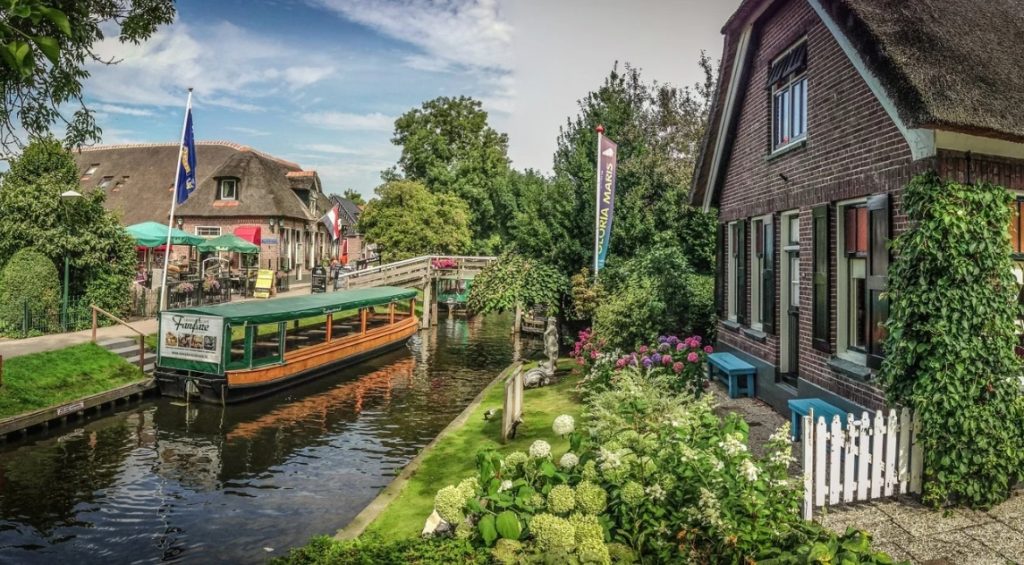In the Netherlands, there is a town that does not have a single car or motorboat. It is one of the most peaceful places on earth that you must visit at least once in your life.
In the midst of a globalized world, it is increasingly difficult to find a place that does not have at least a hint of technology, noise or some sign of urbanization. However, it is not exactly impossible. Today we want to introduce you to Giethoorn, a small Dutch town that is characterized by dreamy tranquillity. It is an extremely quiet place because it is not possible for cars to pass, since there are no roads. Even the locals and visitors to the town are transported silently, whether by bicycle, boat or even walking.

This village is made up of a collection of peat islands connected to each other by bridges. There really isn’t much to do other than immerse yourself in the tranquillity of the city, between thatched-roof farmhouses and walkways that cross the maze of canals.
While the rest of the world tries to tackle its over-reliance on cars, one Dutch city offers a vision of a greener, calmer, car-free future.
Giethoorn has survived for over 800 years without roads. Residents largely depend on boats and bicycles.

Today, this city is known as the “Dutch Venice” as Giethoorn is crossed by more than 55 miles of waterways and 176 pedestrian and bicycle bridges. The town is home to around 2,800 people who are drawn to the city by its peaceful surroundings.
But… how did Giethoorn get to look the way he does?
The city dates back to the excavation of peat in the 13th century. The excavators left huge ravines, which eventually filled with water, leaving islands perfect for a secluded, trackless life.

Over the past century, Giethoorn has actively protected its own peace of mind. The city’s rivers are dominated by non-motorized boats such as punts and canoes, while motor boats are only allowed if equipped with low-decibel motors.
Thanks to this, Giethoorn has become a paradise for wildlife and now boasts incredible vegetation and a wide variety of birds and fish.

Meanwhile, the classic thatched Dutch cottage architecture only adds to the Giethoorn reverie. And there’s more to do than just float: there are museums dedicated to marine life, fossils, and the city itself. In winter, when some of the rivers freeze over, ice skating is a popular pastime.

Although this place seems to be in a far corner of the earth, it is actually very close to Amsterdam, exactly 75 miles. If you want to enjoy the tranquillity to the maximum and avoid crowds, we recommend you visit it in the months of April, May, June or September.
